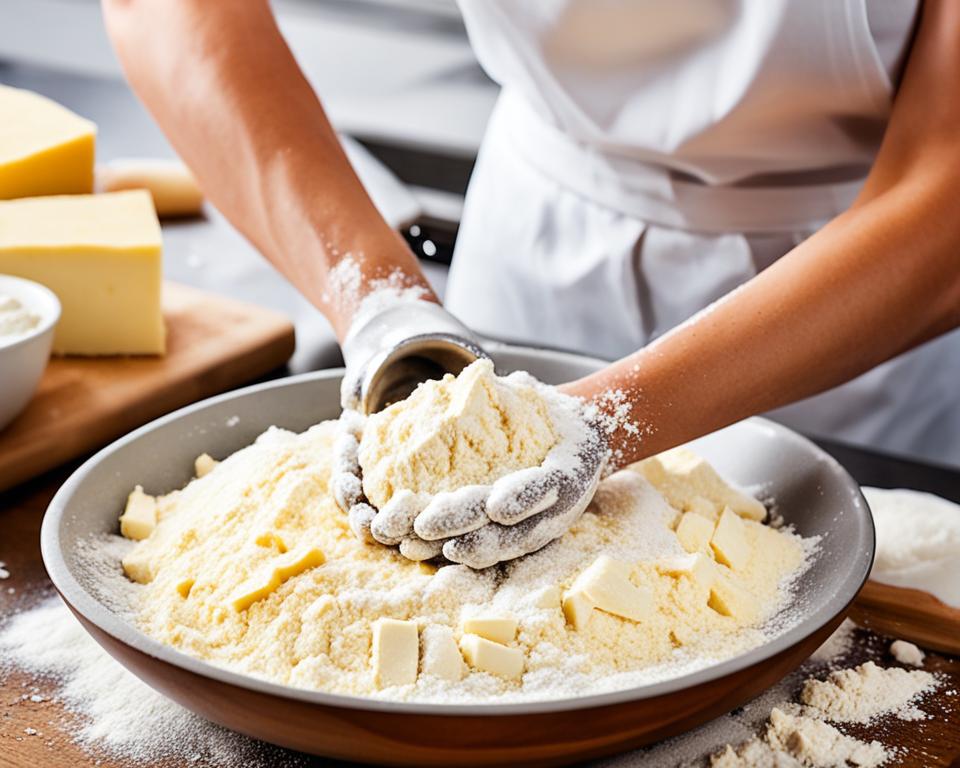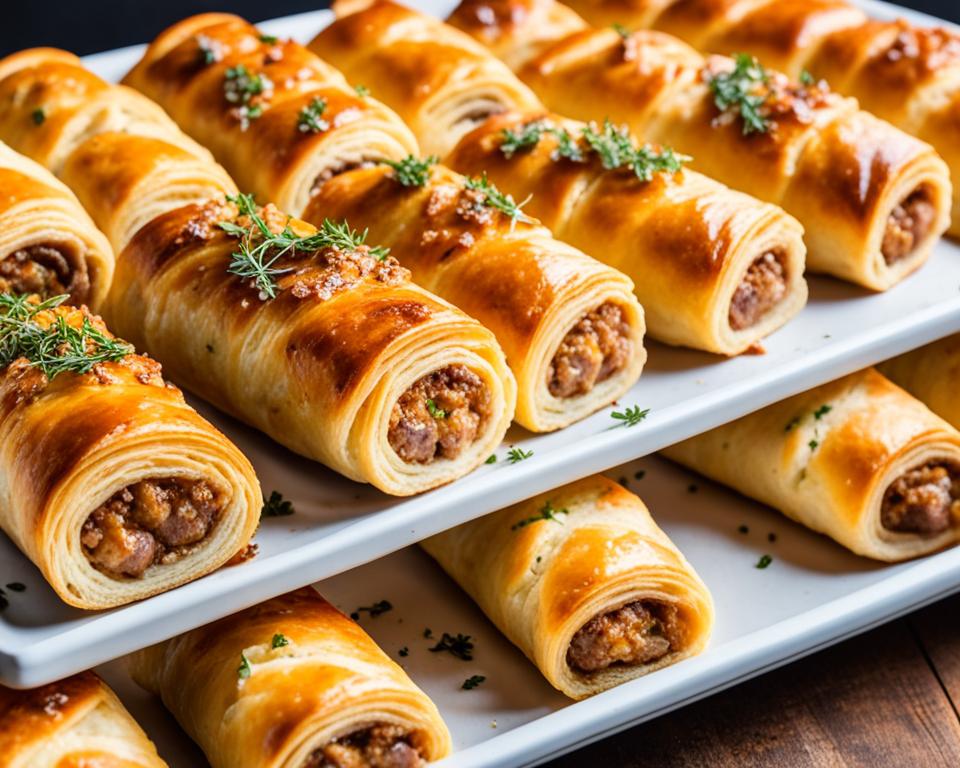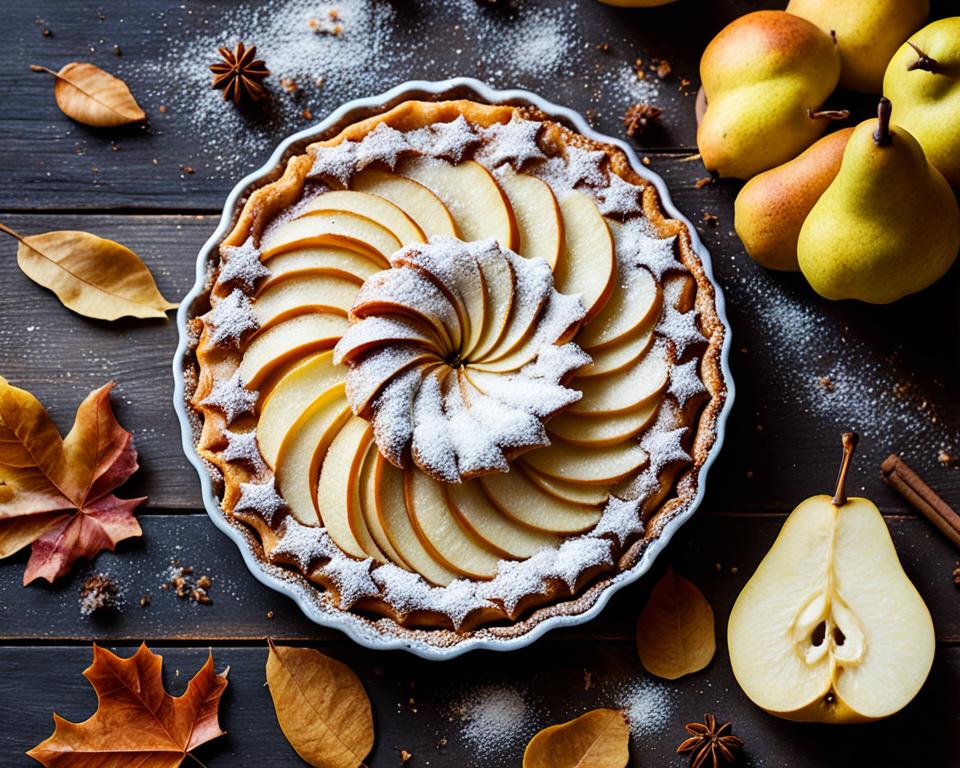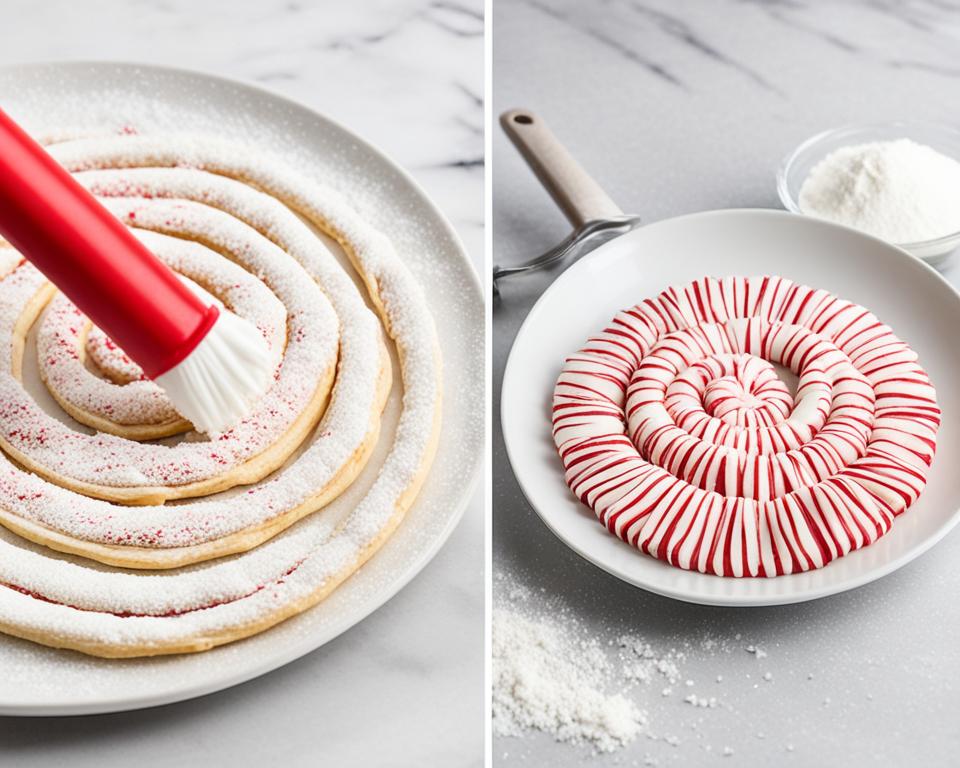Making flaky dough for pastry may seem daunting, but with this easy guide, you’ll be able to create the perfect flaky pastry every time. Say goodbye to store-bought pastry and impress your friends and family with your homemade flaky crust.
Flaky pastry is a versatile and essential component of many delicious dishes, from pies to turnovers. By mastering the art of making your own flaky pastry dough, you can elevate your baking skills and create mouthwatering treats that will leave everyone wanting more.
In this guide, we will take you through the step-by-step process of making flaky pastry dough from scratch. You’ll learn why homemade pastry is worth the effort, important tips for achieving the flakiest results, the essential ingredients you’ll need, and detailed instructions to guide you through the process. We’ll also provide cooking times and tips for using flaky pastry, as well as sweet recipe ideas that will satisfy your cravings.
Whether you’re a seasoned baker looking to enhance your skills or a beginner eager to explore the world of pastry, this guide is designed to help you succeed. Get ready to create flaky, golden-brown perfection with our easy and foolproof recipe for homemade flaky pastry dough.
Key Takeaways:
- Making your own flaky pastry allows you to control the quality and type of ingredients used, resulting in superior taste and texture.
- Follow the provided tips for achieving the flakiest pastry, including cool working conditions and incorporating thin layers of fat between the dough.
- The essential ingredients for flaky pastry dough include butter, plain flour, salt, and cold water.
- Step-by-step instructions are provided to guide you through the process of making flaky pastry dough from mixing the ingredients to chilling and rolling the dough.
- Cooking times for flaky pastry vary depending on the size of the pastry and brushing the top of the pastry with milk before baking promotes a golden brown color.
Why Make Your Own Flaky Pastry?
Making your own flaky pastry is a rewarding and worthwhile endeavor. When it comes to creating the perfect flaky pie crust or the best flaky dough for pastries, nothing beats homemade. There are several compelling reasons why you should consider making your own flaky pastry:
- Cost-effectiveness: Buying pre-made pastry from the store can add up over time. By making your own flaky pastry, you can save money and stretch your baking budget further.
- Quality control: When you make pastry from scratch, you have complete control over the ingredients. You can choose the highest quality butter, flour, and other ingredients to ensure your flaky dough turns out just right.
- Superior flavors and textures: Homemade flaky pastry offers a taste and texture that is far superior to store-bought versions. The crisp, buttery layers melt in your mouth and add depth of flavor to your baked goods.
Making your own flaky pastry allows you to showcase your baking skills and impress your friends and family with delicious treats. The effort and love you put into your homemade flaky crusts will be evident in every bite. So, why settle for anything less when you can create the best flaky dough for pastries right in your own kitchen?
“Making your own flaky pastry allows you to showcase your baking skills and impress your friends and family with delicious treats.”
| Benefits of Making Your Own Flaky Pastry |
|---|
| Cost-effective |
| Quality control over ingredients |
| Superior flavors and textures |
Important Tips for Flaky Pastry Dough
To achieve the flakiest pastry dough, there are a few essential tips to keep in mind:
- Cool Working Conditions: Ensure a cool environment when making flaky pastry dough. Working in a cool room or kitchen helps prevent the fat from melting and keeps the dough firm.
- Preheated Oven: Before baking your flaky pastry, preheat the oven to the required temperature. This ensures that the dough bakes evenly and results in a golden, flaky crust.
- Create Air Pockets: The key to achieving flaky layers is incorporating thin layers of fat between the dough. As the fat melts during baking, it creates air pockets, resulting in a light, airy texture.
- Follow Step-by-Step Instructions: Following a reliable and easy flaky dough recipe is crucial for successful results. This guide provides detailed instructions to help you achieve perfect, flaky layers every time you make pastry dough.
Expert Tip:
“Remember to handle the dough gently to prevent overworking it. Overworking the dough can lead to a tough and less flaky texture.”
By keeping these tips in mind and following the provided instructions, you’ll be well on your way to mastering the art of flaky pastry dough.
| Tip | Description |
|---|---|
| Cool Working Conditions | Ensure a cool environment when making flaky pastry dough. Working in a cool room or kitchen helps prevent the fat from melting and keeps the dough firm. |
| Preheated Oven | Before baking your flaky pastry, preheat the oven to the required temperature. This ensures that the dough bakes evenly and results in a golden, flaky crust. |
| Create Air Pockets | The key to achieving flaky layers is incorporating thin layers of fat between the dough. As the fat melts during baking, it creates air pockets, resulting in a light, airy texture. |
| Follow Step-by-Step Instructions | Following a reliable and easy flaky dough recipe is crucial for successful results. This guide provides detailed instructions to help you achieve perfect, flaky layers every time you make pastry dough. |
Ingredients for Flaky Pastry Dough
Making the perfect flaky pastry dough requires just a few simple ingredients that you probably already have in your pantry. By using the right techniques and proportions, you can create a light and airy pastry that will impress anyone who takes a bite. Here are the key ingredients you’ll need:
- Butter: Using butter at room temperature ensures easy incorporation into the dough, resulting in a tender and flaky texture.
- Plain/All-Purpose Flour: This versatile flour provides the structure for the dough, allowing it to hold its shape while still remaining tender.
- Salt: A pinch of salt enhances the overall flavor of the pastry, balancing the sweetness of fillings.
- Cold Water: Cold water is essential for creating light and flaky layers. It helps keep the butter from melting too quickly, resulting in a more delicate texture.
- Sugar (optional for sweet dishes): If you’re making a sweet dish, adding a little sugar to the dough will provide a touch of sweetness to complement the filling.
These ingredients work together to create the perfect flaky pastry dough. Now that you know what you need, let’s move on to the step-by-step instructions to bring this dough to life.
How to make Flaky Pastry Dough: Step-by-Step Instructions
Step-by-Step Instructions for Flaky Pastry Dough
Follow these step-by-step instructions to make your own flaky pastry dough. With this easy flaky dough recipe, you’ll be able to create a buttery and flaky crust that will elevate your baked goods to a whole new level.
- Mix the sieved flour, salt, and sugar (if using) in a large mixing bowl. Combining the dry ingredients ensures even distribution and enhances the flavors.
- Incorporate the room temperature butter into the flour mixture using a round-bladed knife. The butter should be cut into small chunks beforehand to make the process easier.
- Add cold water gradually to the mixture, stirring with the knife until the dough starts to come together. Be careful not to overmix as it may result in a tough crust.
- Transfer the dough onto a clean surface and gently knead it a few times to ensure all the ingredients are well combined. Shape the dough into a ball.
- Roll out the pastry dough into a rectangle shape, approximately ½ inch thick. Use a rolling pin to achieve an even thickness throughout.
- Dot the softened butter onto two-thirds of the pastry, leaving the edges clean. The butter will create the layers and contribute to the flakiness of the dough.
- Fold the pastry in thirds, like a letter, starting with the unbuttered third. This creates the first layer of butter within the dough.
- Chill the folded dough in the refrigerator for at least 30 minutes to allow the butter to firm up. This step prevents the butter from melting and ensures flaky layers.
- Remove the dough from the refrigerator and place it on a lightly floured surface. Roll out the dough again into a rectangle shape and repeat the folding process twice more.
- After the final folding, cover the dough with plastic wrap and chill it in the refrigerator for another 30 minutes. The chilling process helps relax the gluten and enhances the flakiness.
Now that you’ve followed these easy steps, you have successfully prepared your own flaky pastry dough. The dough is now ready to be used in various sweet and savory recipes. Get creative and explore the endless possibilities of delicious homemade pastries.

Expert Tip:
For best results, ensure that all ingredients are chilled before starting. The cold temperature helps maintain the flakiness of the dough and prevents the butter from melting too quickly.
Cooking Times and Tips for Using Flaky Pastry
When it comes to cooking with flaky pastry, the cooking times can vary depending on the size and type of pastry you are using. Smaller pastries, like vol-au-vents, typically bake in just 8-10 minutes, while larger pies may take anywhere from 20-35 minutes. It’s important to keep an eye on your pastry while it bakes to ensure it reaches that perfect golden brown color without becoming overcooked.
To help achieve that beautiful golden color, brush the top of your pastry with a thin layer of milk before baking. This will give your pastry a lovely sheen and enhance its appearance. However, it’s essential to avoid brushing the sides of the pastry to allow it to rise properly and create those flaky layers.
When it comes to fillings, the options are endless. Experiment with different flavors, spices, and textures to create your own unique combinations. Whether you’re baking a savory pie or a sweet pastry, the flakiness of the dough will add an extra layer of deliciousness to your creations.
Tips for Using Flaky Pastry:
- Brush the top of the pastry with milk for a golden brown color.
- Avoid brushing the sides to allow the pastry to rise properly.
- Experiment with different fillings and seasonings to customize your flavors.
| Pastry Type | Cooking Time |
|---|---|
| Vol-au-vents and Mini Pastries | 8-10 minutes |
| Pies and Tarts | 20-35 minutes |
Sweet Recipes Using Flaky Pastry
Flaky pastry is a versatile dough that can elevate your sweet recipes to new heights. The light and airy texture of flaky pastry pairs perfectly with sweet fillings, creating a delightful contrast in every bite. Here are some delicious sweet recipes that showcase the versatility of flaky pastry:
Pies
From classic apple pie to rich chocolate cream pie, flaky pastry forms the perfect crust for your favorite pie fillings. The golden, buttery layers enhance the flavors of the fruity or creamy fillings, resulting in a heavenly dessert that will satisfy any sweet tooth.
Strudels
Indulge in the decadence of flaky pastry used in strudels. Whether it’s a traditional apple strudel or a luscious berry strudel, the delicate layers of pastry envelop the sweet filling, creating a dessert that is both visually appealing and utterly delicious.
Turnovers
Flaky pastry turnovers are delightful handheld treats suitable for any occasion. Fill them with seasonal fruits, such as peaches or cherries, or get creative with combinations like Nutella and banana for a sweet twist. The crisp exterior and juicy filling make turnovers a popular choice for a quick and satisfying dessert.
Baklava
Take a culinary trip to the Mediterranean with flaky pastry used in baklava. Layers of buttery pastry, honey, and a generous sprinkle of nuts create a sweet, nutty, and slightly spiced dessert that is irresistible. Baklava showcases the versatility of flaky pastry in creating unique and memorable sweet treats.
Experiment with these sweet recipes and discover the endless possibilities of using flaky pastry. Whether you’re hosting a special occasion or simply indulging in a sweet treat, the light and flaky texture of pastry dough will elevate your desserts to a whole new level of deliciousness.
Other Variations of Flaky Pastry Dough
Flaky pastry is just one of many types of pastry dough. If you’re interested in exploring other variations, consider trying shortcrust pastry or French sweet pastry for tarts. Each type of pastry has its unique characteristics and uses, so don’t be afraid to experiment and expand your baking repertoire.
Shortcrust pastry is a versatile dough that can be used for both sweet and savory dishes. It has a crumbly texture and is often used for pies, quiches, and tart shells. This pastry dough is easy to work with and provides a delicious base for a variety of fillings.
French sweet pastry, also known as pâte sucrée, is a rich and buttery dough commonly used in French patisserie. It is slightly sweeter than other pastry doughs and has a delicate, melt-in-your-mouth texture. French sweet pastry is perfect for creating elegant tarts and desserts, such as fruit tarts and custard-filled pastries.
Here’s a comparison of the characteristics of flaky pastry, shortcrust pastry, and French sweet pastry:
| Pastry Type | Characteristics | Common Uses |
|---|---|---|
| Flaky Pastry | Light and airy layers | Pies, turnovers, strudels |
| Shortcrust Pastry | Crumbly texture | Pies, quiches, tart shells |
| French Sweet Pastry | Rich and buttery | Fruit tarts, custard-filled pastries |
As with flaky pastry, mastering the techniques and understanding the unique qualities of each type of pastry dough will enhance your baking skills and allow you to create a wide variety of delicious treats.
Storing and Freezing Flaky Pastry Dough
If you find yourself with leftover flaky pastry dough, you can store it for future use. Here are some tips for making the most of your dough and keeping it freezer-friendly:
Refrigerating the Dough
Step 1: Wrap the dough tightly in plastic wrap to prevent it from drying out.
Step 2: Place the wrapped dough in the refrigerator and store it for several days.
Step 3: When you’re ready to use the refrigerated dough, remove it from the fridge and let it sit at room temperature for about 10-15 minutes to soften slightly. This will make it easier to roll out and work with.
Freezing the Dough
Step 1: Wrap the dough tightly in plastic wrap, ensuring there are no exposed areas.
Step 2: Place the wrapped dough in a freezer-safe bag or container to prevent freezer burn.
Step 3: Label the bag or container with the date and contents, so you can easily identify it later.
Step 4: Store the dough in the freezer for up to several months.
Step 5: When you’re ready to use the frozen dough, transfer it to the refrigerator and thaw overnight. Thawing it slowly in the fridge helps maintain its texture and prevents any moisture loss.
Having homemade flaky pastry dough on hand makes it convenient to bake delicious pastries whenever the craving strikes. Whether you choose to refrigerate or freeze your dough, these storage tips will ensure your dough stays fresh and ready for your next baking adventure!
Conclusion
Making perfect flaky pastry from scratch is a rewarding endeavor that allows you to unleash your creativity in the kitchen. By mastering the techniques and practicing, you can create buttery, mouthwatering layers that will elevate your pastries to a whole new level. Say goodbye to store-bought options and hello to the joy of homemade flaky pastry that will impress your loved ones.
Enjoy the sense of accomplishment that comes with creating something so delicious and decadent. With each flaky bite, you’ll savor the flavors and textures that only homemade pastry can deliver. Whether you’re making pies, strudels, or turnovers, your treats will be elevated to perfection with the delicate layers of flaky pastry.
So, why settle for anything less than perfection? With a little practice and a lot of passion, you can become a master of the art of making flaky pastry dough. Embrace the process, experiment with different fillings and spices, and let your creativity soar. Indulge in the satisfaction of creating delectable pastries that will tantalize your taste buds and leave you craving for more. Get ready to embark on a journey of flavor and craftsmanship with perfect flaky pastry.
FAQ
How can I make flaky dough for pastry?
Follow this easy guide to make the perfect flaky pastry dough. Incorporate thin layers of fat between the dough to create air pockets and achieve flakiness.
Why should I make my own flaky pastry?
Making your own flaky pastry is more cost-effective, allows you to control the quality and type of ingredients, and results in superior flavors and textures compared to store-bought versions.
What are some important tips for making flaky pastry dough?
Ensure cool working conditions, preheat the oven, and follow the step-by-step instructions provided in this guide to create perfect, flaky layers in your pastry dough.
What are the ingredients needed for flaky pastry dough?
The ingredients for flaky pastry dough include butter at room temperature, plain/all-purpose flour, salt, and cold water. Sugar can also be added for sweet dishes.
Could you provide step-by-step instructions for making flaky pastry dough?
Mix the sieved flour, salt, and sugar (if using) together. Incorporate the butter into the mixture, gradually adding cold water until the dough comes together. Roll out, dot butter, fold, chill, and repeat before covering and chilling the dough for 30 minutes.
How long should I cook flaky pastry and what tips should I follow?
Cooking times vary depending on the size of the pastry. Smaller pastries may take around 8-10 minutes, while larger pies can take 20-35 minutes. Brush the top of the pastry with milk before baking for a golden brown color.
What sweet recipes can I make using flaky pastry?
Flaky pastry is perfect for pies, strudels, turnovers, baklava, and other sweet treats. Experiment with different fillings and spices to customize your creations.
Are there other variations of flaky pastry dough I can try?
Yes, you can explore shortcrust pastry and French sweet pastry for tarts. Each type of pastry has its unique characteristics and uses, offering a chance to expand your baking repertoire.
How can I store and freeze leftover flaky pastry dough?
Wrap the dough tightly in plastic wrap and refrigerate it for several days or freeze it for several months. Thaw the frozen dough overnight in the refrigerator before using.
Why should I make my own flaky pastry?
Making your own flaky pastry is a rewarding process that yields delicious results. Enjoy the satisfaction of creating perfect, buttery layers in your pastries and impress your loved ones.





